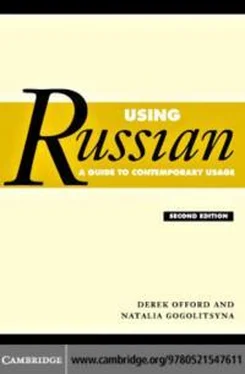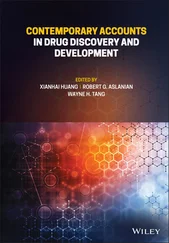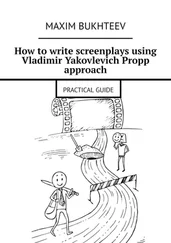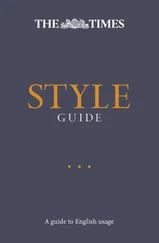Derek Offord - Using Russian - A Guide to Contemporary Usage
Здесь есть возможность читать онлайн «Derek Offord - Using Russian - A Guide to Contemporary Usage» весь текст электронной книги совершенно бесплатно (целиком полную версию без сокращений). В некоторых случаях можно слушать аудио, скачать через торрент в формате fb2 и присутствует краткое содержание. Год выпуска: 2005, Издательство: Cambridge, Жанр: Языкознание, на английском языке. Описание произведения, (предисловие) а так же отзывы посетителей доступны на портале библиотеки ЛибКат.
- Название:Using Russian : A Guide to Contemporary Usage
- Автор:
- Издательство:Cambridge
- Жанр:
- Год:2005
- ISBN:нет данных
- Рейтинг книги:4 / 5. Голосов: 1
-
Избранное:Добавить в избранное
- Отзывы:
-
Ваша оценка:
- 80
- 1
- 2
- 3
- 4
- 5
Using Russian : A Guide to Contemporary Usage: краткое содержание, описание и аннотация
Предлагаем к чтению аннотацию, описание, краткое содержание или предисловие (зависит от того, что написал сам автор книги «Using Russian : A Guide to Contemporary Usage»). Если вы не нашли необходимую информацию о книге — напишите в комментариях, мы постараемся отыскать её.
Using Russian : A Guide to Contemporary Usage — читать онлайн бесплатно полную книгу (весь текст) целиком
Ниже представлен текст книги, разбитый по страницам. Система сохранения места последней прочитанной страницы, позволяет с удобством читать онлайн бесплатно книгу «Using Russian : A Guide to Contemporary Usage», без необходимости каждый раз заново искать на чём Вы остановились. Поставьте закладку, и сможете в любой момент перейти на страницу, на которой закончили чтение.
Интервал:
Закладка:
r
word-formation
Use of the verbal suffix -aну´ть (see also 8.11), e.g. звeздaну´ть (pf ), to bash; сaдaну´ть (pf ), to hit hard, bash .
13
1
Varieties of language and register
r
morphology
The nominative plural form in -a´ for masculine nouns is more
widespread than in the standard language (e.g. шофeрa´, drivers )
(9.1.6).
r Types of declension may be confused, e.g. use of -ов as a genitive plural flexion for nouns other than masculine nouns, as in мeсто´в (see also 1.5.3).
r The form ско´лько врe´мя?, how much time/what is the time? in which the noun is not declined (instead of standard ско´лько
врe´мeни?).
r Verbal conjugations may also be confused (e.g. мaхa´ю instead of мaшу´, from мaхa´ть, I wave ), or other non-standard forms may be found (e.g.
жгётся instead of жжётся, it burns ).
r Use of certain non-standard imperative forms, e.g. eдь instead of eшь, eat , and e´хaй instead of поeзжa´й, go ( by transport ).
r Non-reflexive forms may be substituted for reflexive forms, especially in gerunds and active participles, e.g. сидe´л зaду´мaвши instead of сидe´л зaду´мaвшись, sat thinking , and зaгорe´вший дом instead of зaгорe´вшийся дом, the house which has caught fire .
r Use of past passive participial forms in -тый where in the standard language the ending -нный would be used, e.g. порвa´тый
(по´рвaнный, torn ).
syntax
r Loose and broad use of prepositions, e.g. чe´рeз in the sense of because of (из-зa), e.g. чe´рeз нeго´ опоздa´л(a), I was late because of him . Non-standard use of prepositions after verbs, e.g. (standard forms in
brackets) бeспоко´иться про кого´-н (о ком-н), to worry about sb , and рa´довaться о чём-н (рa´довaться чeму´-н), to be glad at sth .
1.3.3
The neutral register (R2)
This is the norm of an educated speaker, the standard form of the
language that is used for polite but not especially formal
communication. It might be used in broadcasting, among colleagues at work, by educated people who do not know each other very well, by
teachers to their pupils. It is the register that the foreign student as a rule first learns and which is most suitable for his or her first official or social contacts with native speakers. It is ‘correct’ without being fussy or pedantic. This register is perhaps best defined in negative terms, as lacking the distinctive colloquial features of R1 and the bookish
features of R3, though it may to some extent contain elements of both without altogether taking on a colloquial or bookish colouring. Both forms of address, ты and вы, are possible in R2, depending on the
degree of intimacy between the people speaking. First names and
patronymics are likely to be used between acquaintances. On the other 14
1.3
Registers
hand, secondary diminutive forms of first names (e.g. Haтa´шeнькa,
Ta´нeчкa; see 7.3.1) might seem overfamiliar.
1.3.4
The higher register (R3)
This register is most commonly the vehicle for ideas which have been thought out in advance and are expressed in uninterrupted
monologue. The exposition of such ideas may follow established
patterns. Language in the higher register is therefore relatively well organised and formal and may have recourse to set phrases and
formulaic expressions. It eschews elements that can be identified as colloquial (1.3.1), including regional variation (1.5). Vocabulary may be sophisticated, specialised or terminological. Syntax may be
complex. Constructions containing reflexive verbs used in a passive
sense (11.8), gerunds (11.11.1) and active participles (11.11.2) are used freely. Nouns in the same case, especially the genitive, may be
‘threaded’ together (so-called нaни´зывaниe пaдeжe´й), e.g.
прeдстaви´тeль Mинистe´рствa вну´трeнних дeл Гeрмa´нии, (lit) a
representative of the Ministry of the Interior of Germany . Nouns may be preceded by adjectival phrases containing nouns, e.g. пe´рвоe в ми´рe коммунисти´чeскоe госудa´рство, the first communist state in the world .
Within this register the following functional styles may be identified.
(a)
Academic/scientific style (нaу´чный стиль)
The purpose of this functional style is to report information. The style may be appropriate in any medium from a monograph, learned article
or textbook to a lecture or seminar. It may also be used in many fields, indeed in any academic discipline from the natural sciences (e.g.
physics, chemistry and biology), through the social sciences (e.g.
politics, sociology and economics) to the humanities (e.g. philosophy, philology and the study of literature). (It should be noted that the Russian word нaу´кa, like the German word Wissenschaft , has a broader range than the English science , embracing all academic work, not merely the natural and social sciences.) The language of the academic style is characterised by logical and orderly development (hence the copious use of transition words (5.2)). It is carefully formulated with explanation of the relationships between things (hence the use of
numerous subordinating conjunctions (11.12.2)). Choice of words is precise. Much vocabulary is terminological and words are used in their literal meanings. Verbs which would occur in R1/R2 might be
replaced by phrases consisting of verb + verbal noun (e.g. происхо´дит
рост instead of рaстёт, grows ; имeéт мe´сто повышe´ниe тeмпeрaту´ры
instead of повышaéтся тeмпeрaту´рa, the temperature rises ). Various means are used to express a copula for which English would use some
form of the verb to be , e.g. состои´т из, зaключaéтся в, прeдстaвляéт
собо´й, all meaning is (4.2). This style is shorn of artistry and lacks the expressive devices of the colloquial language described in 1.3.1.
15
1
Varieties of language and register
(b)
Official/business style (официa´льно-дeлово´й стиль)
Like the academic style, this functional style has as its purpose
communication in the sense of reporting. It may be found in treaties, legislation, regulations, codes of practice, forms, certificates, official correspondence and even public notices. Its field spans diplomacy, law, administration and commerce and even some of the standard methods
of address in letters (7.17). Whereas in other styles clicheś may be a defect, here they are more or less de rigueur . The language of this style is therefore characterised by numerous formulae, e.g.: в отвe´т нa Baш
зaпро´с, in reply to your enquiry (7.17); свидe´тeльствовaть кому´-либо
увaжe´ниe, to pay one’s respects to sb ; в рaбо´чeм поря´дкe, in due course ; в
обы´чном рeжи´мe, when things are normal (a Putinism, it seems).
Material is arranged according to some generally accepted form.
Terminology abounds. So also do the following phenomena: set
Читать дальшеИнтервал:
Закладка:
Похожие книги на «Using Russian : A Guide to Contemporary Usage»
Представляем Вашему вниманию похожие книги на «Using Russian : A Guide to Contemporary Usage» списком для выбора. Мы отобрали схожую по названию и смыслу литературу в надежде предоставить читателям больше вариантов отыскать новые, интересные, ещё непрочитанные произведения.
Обсуждение, отзывы о книге «Using Russian : A Guide to Contemporary Usage» и просто собственные мнения читателей. Оставьте ваши комментарии, напишите, что Вы думаете о произведении, его смысле или главных героях. Укажите что конкретно понравилось, а что нет, и почему Вы так считаете.












